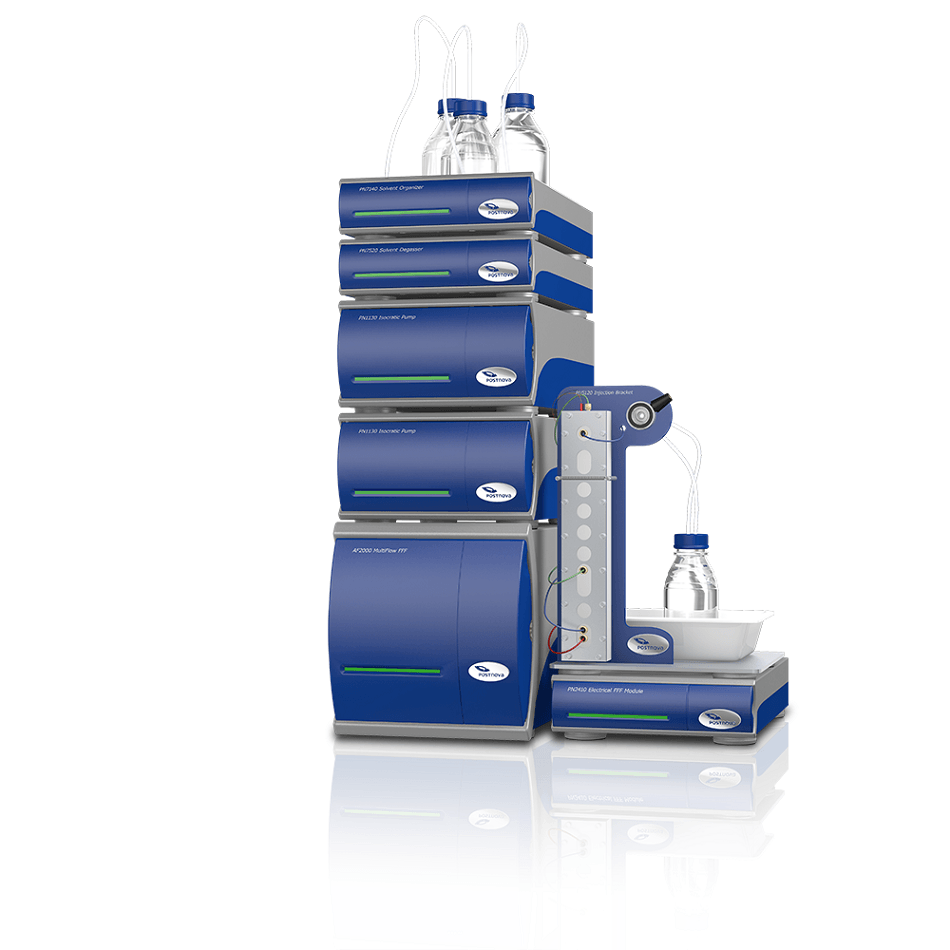
Postnova Analytics announces the launch of the EAF2000 - an innovative new simultaneous Electrical and Asymmetrical Flow Field Flow Fractionation (EAF4) system designed to enhance separation and characterisation of biopharmaceutical, environmental and nanomaterials.
EAF4 technology uniquely combines the principle of Electrical and Asymmetrical Flow FFF in just one system. In an EAF2000 system - Electrical and Cross Flow Fields are applied simultaneously across the FFF channel enabling separations by particle size and particle charge based on electrophoretic mobility. Combining these two powerful separation techniques in a single platform opens the door to characterising complex proteins, antibodies and viruses as well as environmental and charged nanoparticles or polymers that have proven intractable to other techniques.
The EAF2000 system integrates Postnova's market-leading AF2000 Asymmetrical Flow FFF system, with an additional Electrical FFF module, special EAF4 channel and easy-to-use software platform. The new PN2410 Electrical FFF module is used to establish and precisely control the Electric Field allowing constant and reproducible separation conditions. This module and the EAF4 channel are connected to a standard AF2000 Flow FFF system which is controlled by the NovaFFF - EAF4 software which provides constant current operation and data evaluation for electrophoretic mobility calculation.
Modular in design, the AF2000 FFF system incorporates the combined experience, expertise and technological advances from Postnova Analytics' nearly two decades of leadership in FFF. Incorporating a range of FFF modules in a single integrated system to provide universal separation, the AF2000 offers more flexibility, better performance and more robust results than any system before. The AF2000 FFF system is available with a wide range of add-on modules, extra options and special FFF detectors, such as Refractive Index (RI), Multi-Angle Light Scattering (MALS) and Dynamic Light Scattering (DLS). All Postnova FFF modules and detectors have been especially developed for FFF and are perfectly optimised not only for the use with the AF2000 but also for easy interfacing with high-end detection technologies from other suppliers that may already be at use in your laboratory.